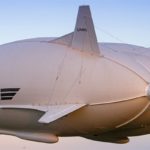PAL-V and Royal NLR (Netherlands Aerospace Centre) have signed a Memorandum of Understanding (MoU) to develop an autonomous eVTOL flying car within ten years.
PAL-V and Royal NLR (Netherlands Aerospace Centre) have signed a Memorandum of Understanding (MoU) to develop an autonomous eVTOL flying car within ten years.
The partners say they expect to make autonomous flying with an eVTOL (electrical Vertical Take-Off and Landing) possible within ten years.
PAL-V is currently finalising the development of its PAL-V Liberty, which it claims is the world’s first commercial flying car. It is expected to enter the market in 2020. The PAL-V Liberty is intended for the city-to-city mobility market.
Collin Beers, Vice President Aerospace Vehicles, NLR said: “NLR has a strong focus on sustainability in the aviation industry. In order to do this NLR is involved in various projects to support Dutch and international partners. One of these projects will be the development of an eVTOL for urban air mobility to support the aviation industry worldwide.”
Robert Dingemanse, CEO of PAL-V, added: “This MoU is a next step in growing our company. With this MoU PAL-V makes another step to develop a flying car for the urban air mobility market, where people can fly electrically without a pilot from one point of the city to another.
“A number of the technologies that we will develop together in this project will also be used for our current model, the PAL-V Liberty.”
Collaboration
PAL-V and NLR will collaborate on aspects such as safe use of air space for not only other flying objects in the air but also for people on the ground, limiting noise pollution and improving the efficiency of current propulsion systems. The platform will also need to comply with rules and regulations that still need to be developed.
“The knowledge of both parties in combination with the facilities of NLR, like the RPAS(Drones) Test Centre, multiple wind tunnels and the composite and 3D printing research institute of NLR allows us to develop a concept that meets the desire of mobility within cities and between cities without an increase in traffic congestion,” said Beers.

